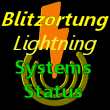(2016-03-27, 17:22)PothThom Wrote: Hello,
caused by working with "mds" and station numbers given by raw TOA material I wondered about two questions:
1) The network uses GPS to determine the location of a station and to provide them with a precise timestamp.
But in what way is the earth approximated as an ideal spheric?
Could it be that the network uses the WGS-84 ellipsoid like e.g. aviation does?
2) Looking for the smallest number of stations required I got the following values:
REGION NUMBER
Europe 12
America 11
Oceania 7
(Indeed I am quite sure only six or seven stations were needed a couple of years ago concerning Europe.)
In what way did/ does the smallest required number of stations change, concerning the three regions?
best regards
PothThom
and thanks for your time...
Whew..
That's not easy to answer, but here's what I generally understand... take with a grain of salt, and use it as a 'very generalized' answer. It's unlikely the developers will respond to this query on the 'Public' forum, unless they wish to correct any glaring errors in this answer... .
Generally, the computations are based on spherical. The algorithms used are generally proprietary. Generally the time of arrival of the stroke 'discharge' impulse is used for a
minimum* of '1st 4 stations, up to 12 (more or less) can be assumed as "primary" locators based on quality of data, etc. A "precise timestamp" is only viable for 'location' if other factors are 'perfect'... and the specific 'location' of a sferic discharge is virtually impossible to generate without some deviation, for many reasons. The timestamp is generated on the local system, at trigger. Generally, the server might look for the '1st timestamp" (first detecting station) of a signal, then go into it's processing mode. 'A detecting station' is NOT necessarily a 'Locator".
After the (for discussion) first 8 -12 "detectors', perhaps another 12 are "secondary", for comparisons and location. Generally, those detectors are compared, and other algorithms enter... those include reiterations of the actual and computed "zero crossings' of the impulse train of the signal, a "Time of Group Arrival" computed in addition to the 'basic' discharge trigger time. From the stations passing the analyses, some number are determined to be 'locators'. The ones with the earliest time stamps, best data, minimum local system delay (antenna, etc) fastest pulse rise time. The initial 'discharge' pulse is sought, which should have a very fast rise time, to 'trigger' level. Not all stations will 'trigger' soon enough to initialize the process. And the'server side' processing may in fact be operating on a different parameter to 'process' as 'a viable signal'. That is, we may trigger locally at 50% of any given sig strength within 2 microseconds, where the server is actually looking for 70% level in 1 microsecond....due to local system antenna induced delays, etc. So, we'll send a signal, but it may not count as a 'stroke' because it doesn't meet the parameters for that stroke derived from other stations. Additionally, we need to be 'as clean as possible' so as much of the precharge, discharge impulses can also be sent, and iterated for TOGA.
And many other variables
Note that sferics received at, say, >80km are likely NOT groundwave signals, but rather 'skywave' reflections, with somewhat distorted 'impulse' characteristics and timing... the best accuracy should come from the stations that hit on the 'ground wave signal'... but this isn't always true because some stations don't operate as well as others, and in many regions the station density is 'low'... they're too far apart, so the skywave signals are the only received signals.
*The Minimum Number of "Locator" Stations required in a region at any given time and station density, in that specific region will change, depending on many factors,... generally, with higher station density, more 'locators' are "required" There is no 'specific' guideline, to my knowledge.
More locators implies better accuracy. More 'detectors'
doesn't imply better accuracy.
Hope I'm not too misplaced on this response... especially as parameters are subject to change, and may change even more. We're not always informed when algorithms and paradigms are modified on the server. Especially as BLUE systems come on line, and RED firmware updates this year, there may be more changes.
As with the "Number of Stations" required, this network is an evolving project.
Cheers!
Mike




